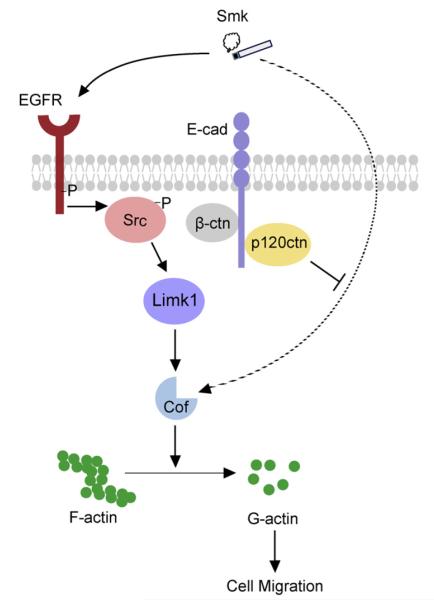Fig. 4.
Smoke mediates EGFR/Src-dependent and independent cell migration. In the normal human airway, adherens junctions (p120ctn, β-ctn and E-cad) are intact on the epithelial cell membrane. Smoke induces rapid activation of membrane Src through EGFR. Src activation promotes cell migration through suppression of Cof-P. When airway epithelial cells express p120ctn, EGFR and Src specific inhibitors (as those used in chemotherapy) help to stabilize p120ctn on the membrane where it functions as a tumor suppressor. In the advanced stages of lung cancer, p120ctn is translocated into the cytoplasm by smoke where it is degraded or modified. Membrane loss of p120ctn results in disruption of adherens junctions and decreased cell–cell adhesion. Src continues to be activated through EGFR but EGFR and Src inhibitors fail to block cell migration because loss of tumor-suppressing membrane p120ctn, activates an alternative EGFR/Src-independent pathway (denoted with a dotted-line). Cell migration continues via this alternative pathway in the absence of p120ctn, bypassing traditional EGFR/Src signaling and thus providing a potential mechanism of chemotherapeutic resistance.

